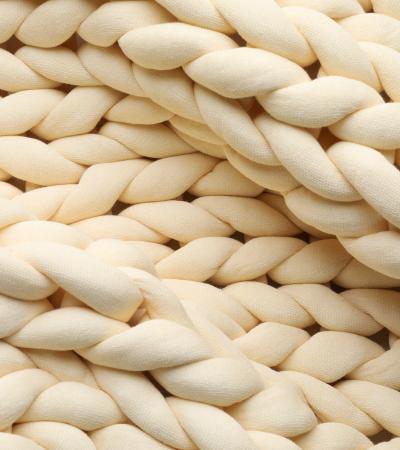DIY Botanical Prints is a beginner's workshop where adult participants can utilize tools such as hand saws and staple guns to gain practical skills and create a lovely and substantial piece of artwork to hang in their homes.
Advanced Planning
I was inspired by a how-to article in the spring 2017 publication of "Magnolia Journal" on creating botanical prints for spring. The supplies and instructions seemed fairly straightforward (always a challenge when crafting for a crowd), so I immediately started adapting it for a library program. My aim was to introduce adult participants to basic hand tools and have each of them walk away with a work of art they created.
Planning began two months ahead of time when the event was first marketed, with the bulk of the work taking place in the two weeks leading up to the workshop. I collaborated with the director of public works to borrow tools and supplies and to develop a prototype for the botanical print.
The biggest challenge was coming up with a prototype that was attractive, easy and replicable. Once the prototype was in place, I then wrote up directions and a supplies lists for each step in the process. View step-by-step instructions and a list of supplies under Attachments.
Marketing
Our audience was craft-minded adults with daytime availability. We reached this group through the digital channels of both the library and the borough. The event listing was posted to our respective websites and Facebook accounts and marketed via several email blasts. We posted fliers around the library and provided quarter-page handouts for patrons to take home.
All 15 spots in the class filled up within a few weeks of advertising. Due to its initial popularity, we would like to hold the workshop again this summer.
Budgeting
We spent $105 to offer this program to a group of 15 attendees. We purchased dowel rods (the biggest expense), staples, snacks, stain and twine. Costs were kept down by rounding up existing supplies from staff, public works and the library’s craft and makerspace closets.
Day-of-event Activity
On the day of the event, I moved around tables to create six separate work stations, one for each step in the process. I set out tools and instructions that were specific to each task.
I was the only employee presenting the program. Looking back, I wish I would have asked a volunteer to assist. Participants required more help than I had anticipated, as many had never used tools before. To keep the projects moving along and to ensure optimal safety, at least two employees or volunteers should oversee the event.
I invited everyone to complete one craft, then go back through the process from the beginning to make another, making improvements along the way. We found that the stain took longer than expected to dry. The participants caught on that if they wiped off the excess stain with a paper towel, they would dry sooner. I also provided snacks in a separate area.
Program Execution
Due to the hands-on nature of the program, we limited our class size to 15 participants. All the attendees were female, most of them retirees. Many had never used hand tools before!
They loved the process and the final products. The botanical prints look and feel substantial, comparable in quality to those found in retail stores. There was a lot of discussion about where they would hang their prints. They also asked, “When are we doing this again?” — always a good indicator of a successful program.
At the program, we had several participants indicate that they were eager to see more daytime crafting opportunities. We have since expanded programming in that area. A few of the participants, having learned the process, told staff that they purchased their own supplies and independently created additional prints for their homes. Many of the attendees expressed that the workshop helped them feel more comfortable using tools they had previously been unfamiliar with or even afraid of.
Advice
When offering this program, be prepared to accommodate a wide variety of skill levels. Some participants may be hesitant to use the hand saws or staplers and may require extra guidance, while other will zip through the project with confidence.
Many of the supplies needed for DIY Botanical Prints can be found lingering in garages and workstations of the people with whom you have a good working relationship. All you have to do is ask!
Supporting Materials
- Feedback (Coming Soon!)
- Programming Librarian Facebook Group


